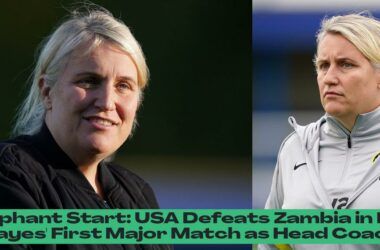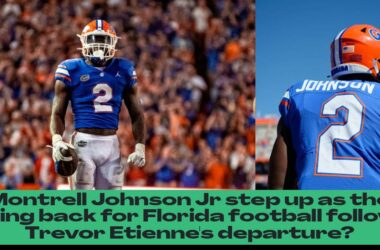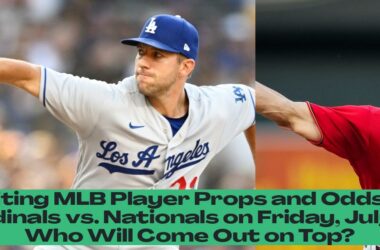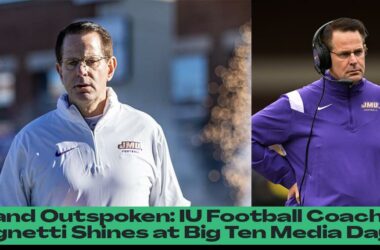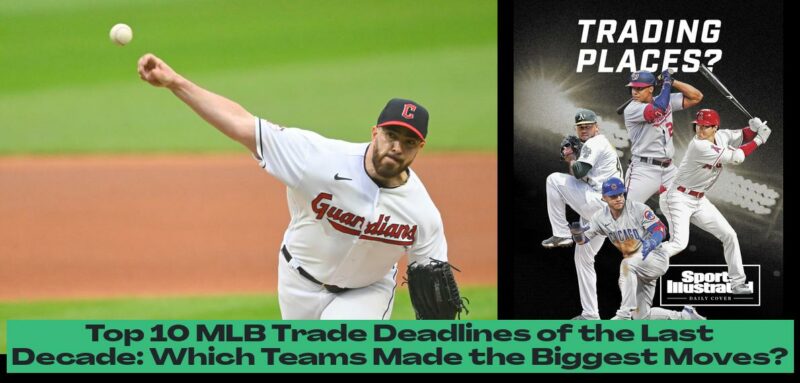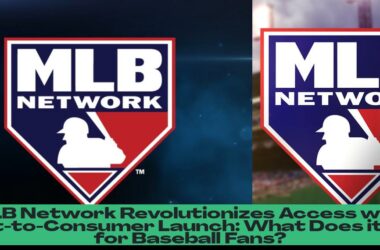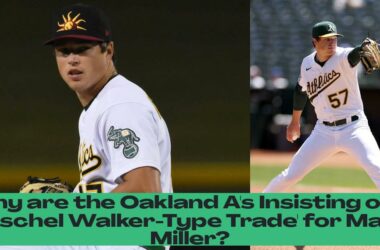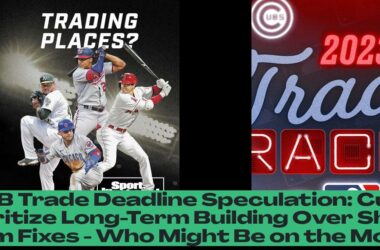Ranking the 10 best MLB trade deadlines for teams over the last decade
Every MLB fan base is looking for the move that will change everything — the late-July trade that pushes a team into the postseason, into a pennant, into a parade. You just need to look back a year ago at the aggressive moves made by the Texas Rangers and Arizona Diamondbacks to see how much a well-executed trade deadline can alter the landscape of a season.
Often, we think of deadline moves individually — the one trade that made a difference. But a team’s activity at the trade deadline is almost always more than a single move, and its attempt at improvement comprises everything it does in late July. Those moves can help over the next two to three months, or over the next two to three years. A team can have a good deadline buying, it can have a good deadline selling, and it can have a good deadline straddling the line between the two.
With the help of colleagues and a collection of executives across the sport, I’ve ranked the 10 best trade deadlines for teams over the last decade. Which teams best took advantage of the opportunity to better themselves, either in the present or future, at the trade deadline?
For what it’s worth, the honorable mentions include the 2023 Rangers, 2022 Nationals, 2021 Cardinals, 2018 Red Sox, 2016 Astros and 2015 Rangers.
10. 2016 New York Yankees
- Acquired Adam Warren, Gleyber Torres, Billy McKinney and Rashad Crawford from the Cubs for Aroldis Chapman
- Acquired Clint Frazier, Justus Sheffield, Ben Heller and J.P. Feyereisen from Cleveland for Andrew Miller
- Acquired Nick Green, Erik Swanson and Dillon Tate from Texas for Carlos Beltrán
- Acquired Tyler Clippard from Arizona for Vicente Campos
Universally lauded at the time, the Yankees’ pivot to selling in 2016 has lost some luster in the intervening years. Of all the prospects they received, only Gleyber Torres emerged as a contributor, let alone an everyday player, and even he has fallen shy of expectations over the years. Surely the Yankees could have used a postseason weapon like Miller in the final two years of his contract more than what they received back from Cleveland. Sometimes good processes don’t lead to the best results.
That said, deadlines have to be judged not just by what teams do, but also by what they don’t do. The Yankees hadn’t sold in a generation, and the decision was not clear-cut in a relatively open American League. New York had some pretty good prospects it could have dealt to improve the present. Had the Yankees taken that route, the Baby Bombers that have fueled a longer run of contention in the years since would not have coalesced the same way.
9. 2022 Cincinnati Reds
- Acquired Spencer Steer, Christian Encarnacion-Strand and Steven Hajjar from Minnesota for Tyler Mahle
- Acquired Noelvi Marte, Edwin Arroyo, Levi Stoudt and Andrew Moore from Seattle for Luis Castillo
- Acquired José Acuña and Hector Rodríguez from the Mets for Tyler Naquin and Phillip Diehl
- Acquired Victor Acosta from San Diego for Brandon Drury
- Acquired Nicholas Northcut from Boston for Tommy Pham
- Acquired Austin Romine from St. Louis for cash
A sell-off takes years to fully evaluate, and this ranking of the Reds’ haul two summers ago might eventually look foolish in either direction.
For now, the trades of Mahle and Castillo have started to pay major-league dividends. Steer has become an integral part of the Reds’ lineup, being voted the team MVP in 2023. Marte entered the season as a top-20 prospect in the sport, Arroyo as a top-100 guy. Encarnacion-Strand looked like a useful big-league piece as well before an injury earlier this year. Even the unheralded fliers they landed from the Mets for a fourth outfielder and minor-league reliever look more promising now than they did then.
8. 2015 Toronto Blue Jays
- Acquired David Price from Detroit for Daniel Norris, Matthew Boyd and Jairo Labourt
- Acquired Troy Tulowitzki and LaTroy Hawkins from Colorado for José Reyes, Miguel Castro, Jeff Hoffman and Jesus Tinoco
- Acquired Ben Revere from Philadelphia for Jimmy Cordero and Alberto Tirado
- Acquired Mark Lowe from Seattle for Nick Wells, Jake Brentz and Rob Rasmussen
Going into the 2015 trade deadline, the Blue Jays sat seventh in the American League, consistently lingering around .500, trailing the Yankees in the East by seven games. But Alex Anthopoulos looked less at Toronto’s record than at a run differential of plus-100 — tops in the AL. And so the Blue Jays added aggressively, bringing in Price amid Detroit’s last-second sell-off and upgrading high-priced shortstops from Reyes to Tulowitzki.
With Price going 9-1 for his new team, the Jays won 42 of their last 60 games, not only finding the postseason but also chasing down New York to win the AL East for the first time in 22 years.
7. 2020 Seattle Mariners
- Acquired Ty France, Andres Muñoz, Luis Torrens and Taylor Trammell from San Diego for Austin Nola, Austin Adams and Dan Altavilla
- Acquired Matt Brash from San Diego for Taylor Williams
- Acquired Alberto Rodriguez from Toronto for Taijuan Walker
Seattle’s maneuvering at the anomalous 2020 deadline was not top of mind when I started this exercise. When an executive mentioned it, I had to ask what the Mariners gave up and what they got in return. But you have to give them bonus points for the degree of difficulty here. The 2020 trade deadline came at the end of August after about 35 games, when most every team was within a game or two of the expanded postseason tournament. As a result, almost nobody made moves of note.
And yet, in two separate deals with a Padres team that acted uniquely as an aggressive buyer that summer, Jerry Dipoto and the Mariners landed two everyday players, a future closer, a future setup man and a prospect of note. In exchange, they gave up three relievers and a catcher in the midst of a career season. You could make a case pretty swiftly that Seattle received the four best players in these two deals.
6. 2016 Cleveland Indians
- Acquired Andrew Miller from the Yankees for Clint Frazier, Justus Sheffield, Ben Heller and J.P Feyereisen
- Acquired Brandon Guyer from Tampa Bay for Nathan Lukes and Jhonleider Salinas
In the final weeks of September, it looked as if Cleveland’s bold move for Miller wasn’t going to bear fruit in 2016. Injuries to Carlos Carrasco and Danny Salazar had diminished Cleveland’s strength, leaving it to count on a three-man rotation in October.
And then, in Game 1 of the Division Series against the favored Red Sox, manager Terry Francona summoned Miller in the fifth inning of a one-run game — and a blueprint was established. While the Royals had relied on their bullpen the previous two autumns, no team had put as big a burden on a single reliever as Cleveland did on Miller. The lefty threw 19 1/3 innings out of the bullpen that postseason — the most in history — and brought Cleveland within a win of ending its championship drought. He remained a vital piece for two additional seasons in Cleveland.
Guyer, for what it’s worth, nearly pushed Cleveland over the edge in that World Series, in which he led the team in OPS and delivered the RBI double directly ahead of Rajai Davis’ memorable game-tying home run in Game 7.
5. 2021 Los Angeles Dodgers
- Acquired Max Scherzer and Trea Turner from Washington for Keibert Ruiz, Josiah Gray, Gerardo Carrillo and Donovan Casey
- Acquired Danny Duffy from Kansas City for Zach Willeman
- Acquired Billy McKinney from the Mets for Carlos Rincon
For the most part, I’m keeping the emphasis on the entire body of work for a team at the deadline, instead of focusing on individual trades. But, I mean, the Dodgers got Max Scherzer and Trea Turner!
A trade that looked like a coup the day it was made only got better as the season transpired. Scherzer put his name alongside 1998 Randy Johnson and 2008 CC Sabathia as one of the best deadline rotation additions ever. Turner contributed more than 2.5 wins above replacement (according to FanGraphs) in the last two months of the season. While the Dodgers still couldn’t track down the Giants in maybe the last great divisional race we’ll ever see, they enacted revenge with a five-game victory in the Division Series — closed out, of course, by Scherzer.
4. 2015 Kansas City Royals
- Acquired Ben Zobrist from Oakland for Sean Manaea and Aaron Brooks
- Acquired Johnny Cueto from Cincinnati for Brandon Finnegan, John Lamb and Cody Reed
The Royals had built off their surprising pennant run in 2014 to reach the trade deadline the following season with the best record in the American League. They had two clear needs at second base and the top of the rotation, and they filled them with two of the best options possible.
Zobrist was a perfect fit for a lineup that built rallies around contact and base running. And while Cueto labored through the final two months of the regular season, he delivered in the most meaningful game of all, twirling a two-hit complete game in Game 2 of the World Series against the Mets.
You can’t say this for many teams on this list: The Royals won the World Series because of what they did at the deadline.
3. 2018 Tampa Bay Rays
- Acquired Tyler Glasnow, Austin Meadows and Shane Baz from Pittsburgh for Chris Archer
- Acquired Tommy Pham from St. Louis for Génesis Cabrera, Justin Williams and Roel Ramírez
- Acquired Jalen Beeks from Boston for Nathan Eovaldi
- Acquired Michael Perez and Brian Shaffer from Arizona for Matt Andriese
Few 11-game winning streaks have ever been as disastrous as the one that compelled the Pirates to pull the trigger on the deal here for Archer. While Archer would be below-league-average as a starter for Pittsburgh, Glasnow put it together to become a front-line pitcher with Tampa Bay. Meadows made an All-Star team (and was traded for current contributor Isaac Paredes), and Baz is back to being an integral part of the Rays’ rotation.
While that’s the bulk of the reason for this ranking, don’t overlook the deal for Pham, who was months removed from getting MVP votes when St. Louis traded him with multiple years of team control remaining. He raked while a Ray, and then was moved to San Diego in a trade that didn’t work out as well for Tampa Bay.
2. 2015 New York Mets
- Acquired Yoenis Céspedes from Detroit for Michael Fulmer and Luis Cessa
- Acquired Tyler Clippard from Oakland for Casey Meisner
- Acquired Juan Uribe and Kelly Johnson from Atlanta for John Gant and Rob Whalen
Look, regional sports networks don’t make documentaries about trade deadlines that flop, and few teams have endured a deadline as operatic as New York’s in 2015. A trade that would have sent Zack Wheeler and Wilmer Flores to Milwaukee for Carlos Gómez fell through — only after Flores cried on the field thinking he’d been dealt — and opened the door for the Mets to acquire Céspedes. The outfielder’s power transformed the New York offense; after averaging 3.5 runs per game through July, the Mets scored 5.4 per game after the trade. Clippard and the August waiver addition of Addison Reed bolstered the bullpen, completing a metamorphosis from a run-of-the-mill .500 team to an all-around powerhouse capable of speeding past the Nationals in the division and beating the Dodgers and Cubs en route to the pennant.
Yes, it is weird to rank this deadline ahead of the one executed by the Royals team that beat the Mets in the World Series that season. However, Kansas City entered the deadline with the best record in the AL and a healthy run differential, while New York was barely above .500 and had been outscored on the season. The Mets’ moves improved the roster more — not to mention how hanging on to Flores and in particular Wheeler helped the team in future years.
1. 2021 Atlanta Braves
- Acquired Joc Pederson from the Cubs for Bryce Ball
- Acquired Adam Duvall from Miami for Alex Jackson
- Acquired Jorge Soler from Kansas City for Kasey Kalich
- Acquired Eddie Rosario from Cleveland for Pablo Sandoval
- Acquired Richard Rodríguez from Pittsburgh for Bryse Wilson and Ricky DeVito
The gold standard in recent deadlines derived from a quantity-over-quality approach that hit the jackpot. To replace the injured Ronald Acuña Jr., Alex Anthopoulos and Atlanta brought in a quartet of outfielders and hoped one or two would work out. Instead, all four did, combining to hit 44 home runs and deliver an .827 OPS — which is basically a Kyle Schwarber season. That helped Atlanta chase down a Mets team that had started flagging in the NL East, to get into the dance. Once there, Rosario went off to win NLCS MVP in an upset of the Dodgers and Soler took home World Series MVP honors in a six-game defeat of the Astros. All that for very little talent going the other way.
Ironically, on deadline day the acquisition of Rodríguez loomed largest. However, the right-hander, who had an additional year of team control, didn’t make the postseason roster and was non-tendered in the fall. Which, as one executive pointed out with a shrug, shows you how random the deadline can be.
(Top photo of Jorge Soler and Eddie Rosario during the 2021 World Series: Elsa / Getty Images)
- MLB trade deadlines can significantly impact a team’s season, pushing them towards postseason success.
- Teams make multiple moves during the trade deadline period, aiming to improve their roster for the present and future.
- A successful trade deadline can involve buying, selling, or a combination of both strategies.
- The 2016 New York Yankees had a notable trade deadline, acquiring key prospects like Gleyber Torres but not all acquisitions panned out as expected.
- Despite good processes, the outcomes of trade deadlines may not always align with expectations.

